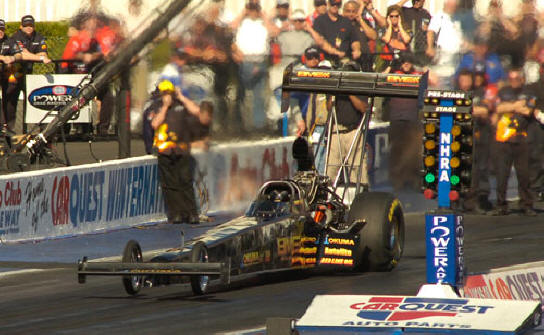I'll be darned seg, try this for a bit of an intellectual challenge?
How a Tyre Supports its Load
It is commonly thought that the air pressure in a tyre supports the rim. If you think about it, this can not be so, because the air pressure against the rim is the same all the way around.
How, then, does a tyre support its load?
First of all, the role of air pressure in the tyre is to hold the fabric under tension -- in all but one place, the contact patch with the road surface.
At the contact patch, the tread and fabric of the tyre are flattened against the road. Air pressure can only push directly outward, and so here, it pushes directly downward to balance the weight load -- they cancel each other out, and the air pressure against the contact patch makes no contribution to the tension of the fabric. The area of the contact patch equals the weight load, divided by the air pressure. For example, if the air pressure is 50 PSI and the weight load is 100 pounds,, the contact patch will be two square inches.
The threads of the tyre fabric can only transmit loads lengthwise and in tension. The air pressure forms them into a circular cross-section except where the road contract patch disturbs this. Here, the cross-section is flat at the bottom, with an arc of a smaller circle on either side.
The load is transferred from the contact patch to the tyre sidewalls by the shallower angle of the threads next to the contact patch -- they are pulling downward less. The load is similarly transferred from the sidewalls to the rim by the shallower angle of the threads of the fabric where they meet the rim. As the threads pull downward less, they also pull outward more, but the outward forces at the two sides of the tyre are equal and opposite, and cancel out.
These effects together produce the bulge seen at the bottom of a tyre under load. Because the contact patch is flat against the road, the curvature of the sidewalls is increased -- the tyre becomes effectively thinner, not counting the inactive width of the contact patch. The tension of the threads is actually slightly reduced at the bulge, in spite of their supporting the load!
With a bias-ply tyre, the load is carried lengthwise in both directions along the tyre by the diagonal threads, so the bulge is longer and less deep than on a radial-ply tyre In the early days of radial-ply car tyres, people often thought they were underinflated, because the bulge at the bottom was more pronounced.
A tyre, then, supports its load by reduction of downward pull, very much the same way that spoking of the wheel supports its load. The tension-spoked wheel and the pneumatic tyre are two examples of what are called preloaded tensile structures, brilliant, counterintuitive designs working together remarkably to support as much as 100 times their own weight.
Bias plies also help to transmit lateral and torque loads, by triangulating the connection between the contact patch and the rim -- much like the way the spokes of a semi-tangent spoked wheel transmit lateral and torque loads. With tubulars, the diagonal plies also work like a Chinese finger puzzle: the air pressure makes the tyre fatter, and so makes it shorter and helps hold it to the rim.
If you would like to get into mathematical details, there is an excellent technical description in an old Britannica encyclopedia article online.
- Login or Register
No account yet? Sign up












